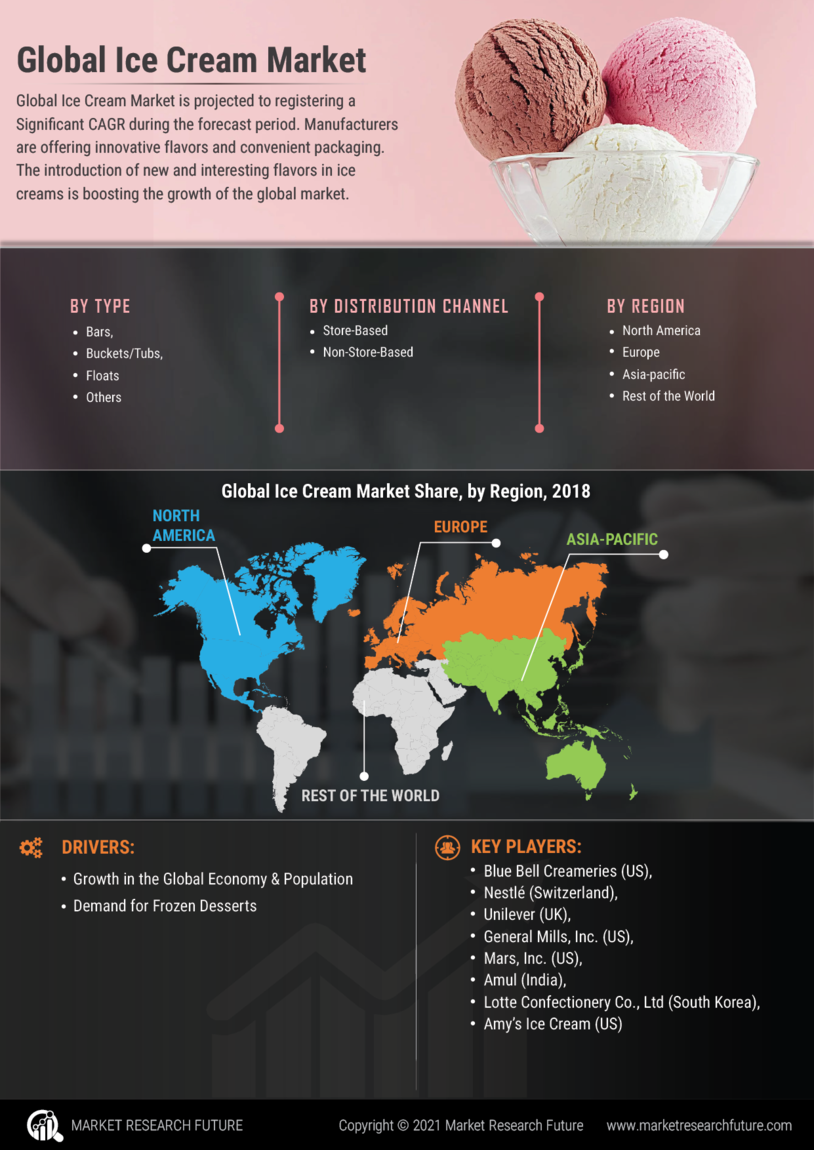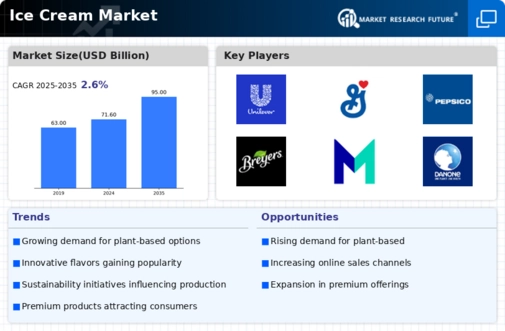Ice Cream Market Summary
As per Market Research Future analysis, the Ice Cream Market Size was estimated at 71.63 USD Billion in 2024. The Ice Cream industry is projected to grow from 73.49 USD Billion in 2025 to 95.0 USD Billion by 2035, exhibiting a compound annual growth rate (CAGR) of 2.6% during the forecast period 2025 - 2035
Key Market Trends & Highlights
The Ice Cream Market is experiencing a dynamic shift towards health-conscious and premium offerings, driven by evolving consumer preferences.
- Health-conscious offerings are increasingly influencing product development across the market.
- North America remains the largest market, while the Asia-Pacific region is recognized as the fastest-growing area for ice cream consumption.
- Cup ice cream continues to dominate sales, whereas stick ice cream is emerging as the fastest-growing segment.
- Market drivers such as flavor innovation and sustainability initiatives are propelling the demand for premium and artisanal products.
Market Size & Forecast
| 2024 Market Size | 71.63 (USD Billion) |
| 2035 Market Size | 95.0 (USD Billion) |
| CAGR (2025 - 2035) | 2.6% |
Major Players
Unilever (GB), Nestle (CH), General Mills (US), Mars, Incorporated (US), Dairy Farmers of America (US), Blue Bell Creameries (US), Häagen-Dazs (US), Breyers (US), Pinnacle Foods (US)


















Leave a Comment